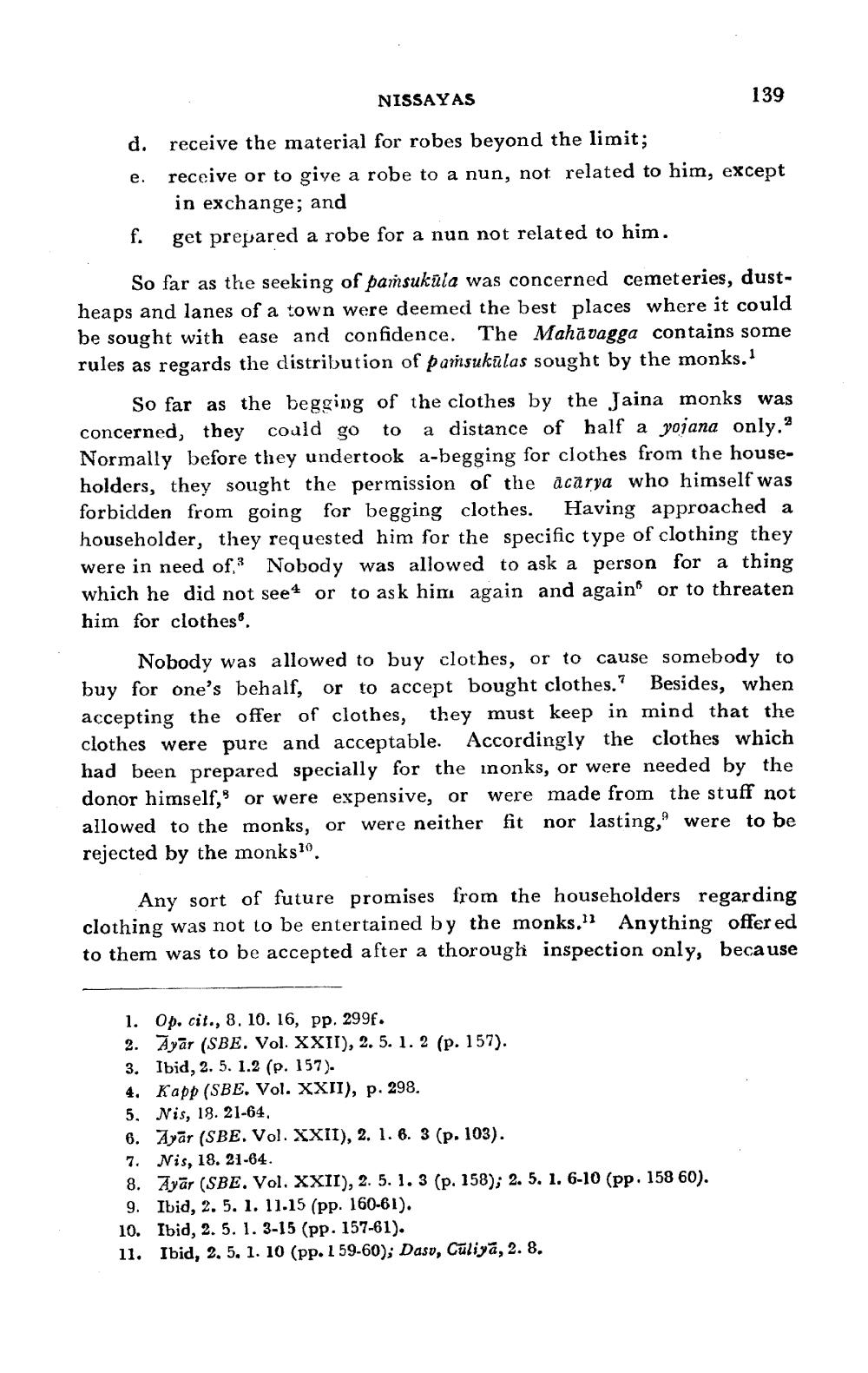________________
NISSAYAS
139
d. receive the material for robes beyond the limit; e. receive or to give a robe to a nun, not related to him, except
in exchange; and f. get prepared a robe for a nun not related to him.
So far as the seeking of pamsukula was concerned cemeteries, dustheaps and lanes of a town were deemed the best places where it could be sought with ease and confidence. The Mahāvagga contains some rules as regards the distribution of pasukūlas sought by the monks."
So far as the begging of the clothes by the Jaina monks was concerned, they could go to a distance of half a yojana only.2 Normally before they undertook a-begging for clothes from the householders, they sought the permission of the acārya who himself was forbidden from going for begging clothes. Having approached a householder, they requested him for the specific type of clothing they were in need of, Nobody was allowed to ask a person for a thing which he did not see4 or to ask him again and again or to threaten him for clothes,
Nobody was allowed to buy clothes, or to cause somebody to buy for one's behalf, or to accept bought clothes. Besides, when accepting the offer of clothes, they must keep in mind that the clothes were pure and acceptable. Accordingly the clothes which had been prepared specially for the inonks, or were needed by the donor himself, or were expensive, or were made from the stuff not allowed to the monks, or were neither fit nor lasting,' were to be rejected by the monks 20.
Any sort of future promises from the householders regarding clothing was not to be entertained by the monks." Anything offered to them was to be accepted after a thorough inspection only, because
1. Op. cit., 8. 10. 16, pp. 299f. 2. Ayar (SBE. Vol. XXII), 2. 5. 1. 2 (p. 157). 3. Ibid, 2. 5. 1.2 (p. 157). 4. Kapp (SBE. Vol. XXII), p. 298. 5. Nis, 18. 21-64, 6. Ayar (SBE. Vol. XXII), 2. 1. 6. 3 (p. 103). 7. Nis, 18. 21-64. 8. Ayar (SBE. Vol. XXII), 2. 5. 1.3 (p. 158); 2. 5. 1. 6-10 (pp. 158 60). 9. Ibid, 2. 5. 1. 11.15 (pp. 160-61). 10. Ibid, 2. 5. 1. 3-15 (pp. 157-61). 11. Ibid, 2, 5, 1. 10 (pp. 1 59-60); Daso, Culiyā, 2. 8.




